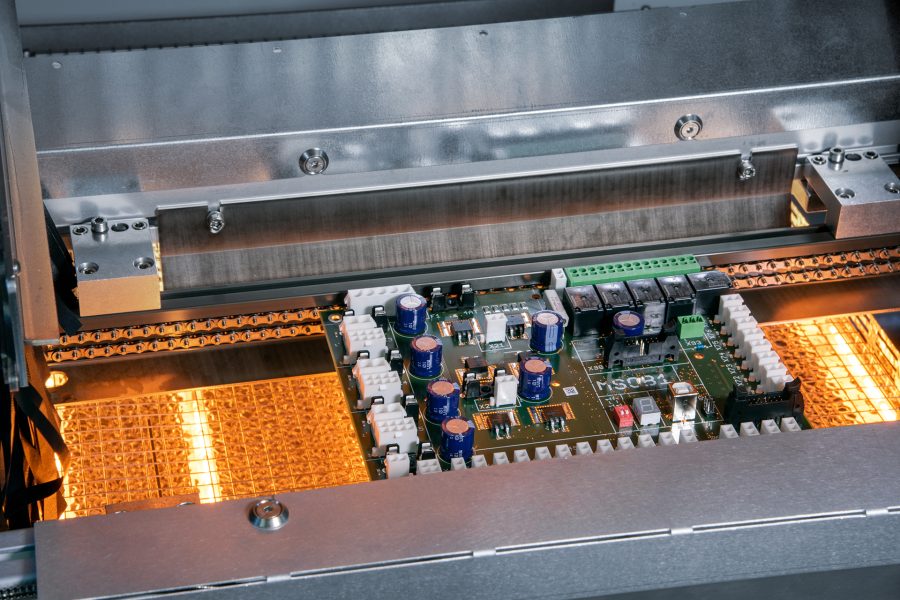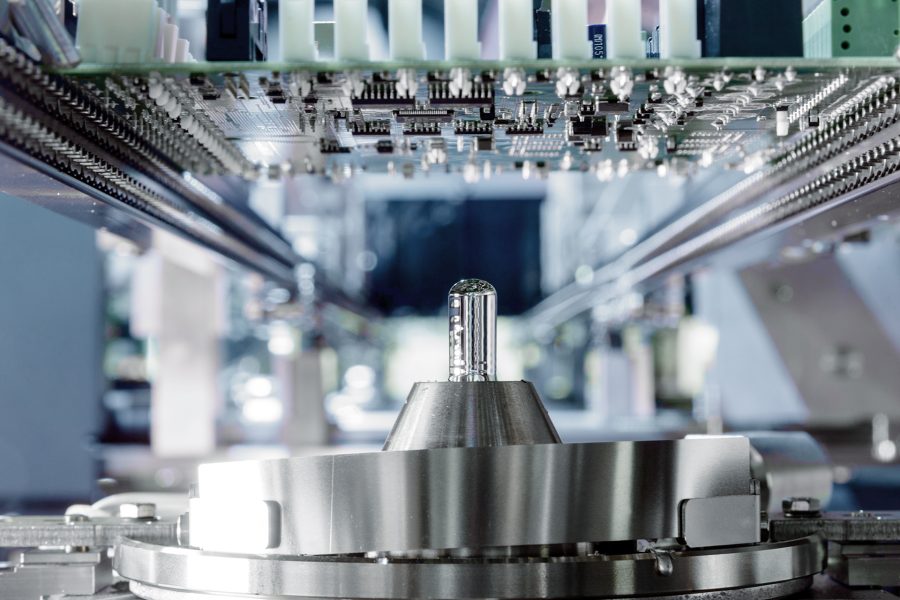Due to state-of-the-art technology, coupled with years of experience, JH Electronic Systems also meets the highest demands in terms of flexibility, quality and throughput in the field of selective soldering.
In selective soldering, individual wired components are selectively soldered on the circuit board. We use this process when components with low soldering heat resistance must be processed, or when no solder mask is available for PCBs assembled on both sides. Compared to conventional wave soldering, the heat input into the assembly is much lower. Due to the individual adjustment of the soldering parameters per solder joint, the process is characterised by the highest quality and reproducibility.
To ensure excellent wetting during soldering, the areas to be soldered are applied with flux before soldering by means of a monitored, meterable and highly precise spray system, either as dots or tracks.
To exclude thermal shock when the PCB comes into contact with the liquid solder, JH Electronic Systems uses a modular preheating concept to transfer up to 50% of the thermal energy into the assembly. Convection heating as well as medium-wave radiant heaters and short-wave infrared heaters are used.


By using several in-line soldering modules, JH Electronic Systems not only increases the throughput in selective soldering, it also uses different nozzle diameters for a PCB in order to solder a high variance of components to be soldered in a process-safe manner and in the highest quality.
Significant advantages:
